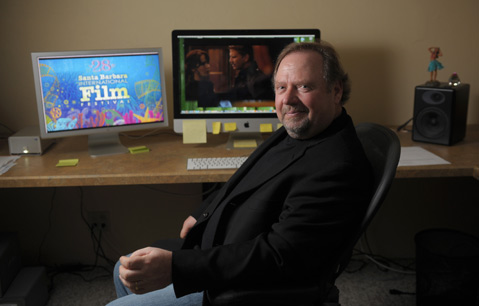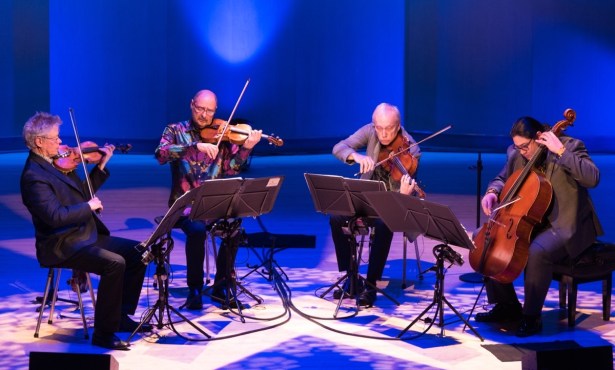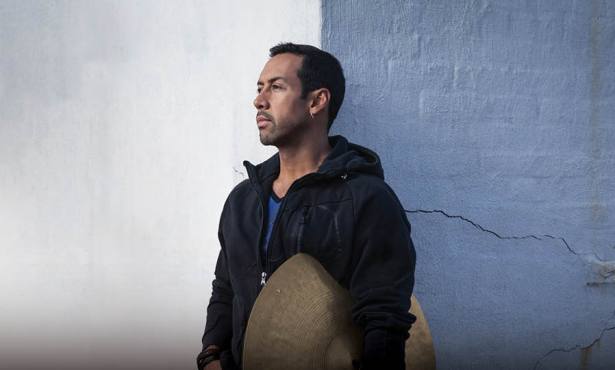A Tribute to Tributes
Behind the Scenes with Dana Morrow, Who Makes SBIFF Special

What’s driving the explosive growth of the Santa Barbara International Film Festival? Is it the amazing symbiosis between the fest and the Oscars, drawing Academy Award hopefuls to town to meet the press and campaign for the statues? Or is it the consistency of programming, which puts important films from around the world in front of well-informed and well-connected audiences? Certainly both factors are true, but neither would have anything like the impact they do without the festival’s high level of execution, both in the Arlington and Lobero theaters as part of the tribute programs — where live, onstage interviews with the fest’s celebrity honorees are interspersed with scenes from their careers — and in all the venues where the various films are screened.
While many of us have experienced the magic of a tribute experience or seen unheralded works of independent cinema during the fest, few people outside of SBIFF Executive Director Roger Durling’s dedicated staff know how much and what kind of work makes it all happen. Most of those roads eventually lead to the desk of Dana Morrow, the man who directs the high-profile tributes and the technical arrangements for every film screening at every venue.
Morrow clearly loves his job, and he describes the development of the tribute montages as an intense and personal journey through an artist’s entire career. “For the Robert De Niro tribute [part of last December’s fundraiser], I watched 25 films,” said Morrow. “While I am watching, I am logging scenes for all kinds of things, from a certain action, like running from a bomb, to a camera movement, like when the camera pans around the actor 360 degrees, and even down to the level of the gesture, like a particularly endearing or characteristic turn of the head that I know will work.” Morrow produces two montages for each tribute: “the emotion tribute, showing a softer side” and the “build montage,” he explained. “That’s the one in which you’ll typically see the action,” said Morrow, “but it’s not just about that, because it often also contains the love scenes. The point of that one is the build: It has to get steadily more intense and exciting.”
But his work isn’t done by the time the tributes roll, for Morrow is also directing the live shots that get projected onto the screen behind the star as he or she is interviewed. When he took on that role five years ago, Morrow immediately improved the format by adding a three-camera setup. “Before that, it was just a single-camera static image,” he explained. “Now we shoot from three positions and edit the images live. It’s much more compelling visually.”
Altogether, the tributes allow audiences to experience an intimate encounter with some of Hollywood’s most beloved and respected artists. “When the tribute thing works,” said Morrow, “you walk out of the Arlington feeling like you have just had a long, private conversation with a huge star.”
There’s another kind of magic happening in each of the smaller screening halls, too, in the form of brand-new technology. For decades, films were delivered as prints and projected on standard film projectors; however, that process has recently shifted almost entirely to a digital platform, and today they arrive as digital cinema packages, or DCPs. “These are hard drives that carry all the various files required to load the server that runs the digital projector,” said Morrow, who’s responsible for making sure all of the fest’s 200 or so films are properly projected. “They arrive packed in a special case, just like the film prints used to, but, instead of rolls of film inside, they have these giant hard drives in cartridges.”
With films — or should we say DCPs? — arriving from all over the world, some of them just hours before they are to be shown, projection remains an ever-changing challenge for Morrow and his staff. Together with Luke Archer, who has been the festival’s technical coordinator for the past two years, Morrow works nonstop to create the optimal experience that SBIFF attendees have come to expect.
“Everyone works hard,” he said, “but we love it.”



